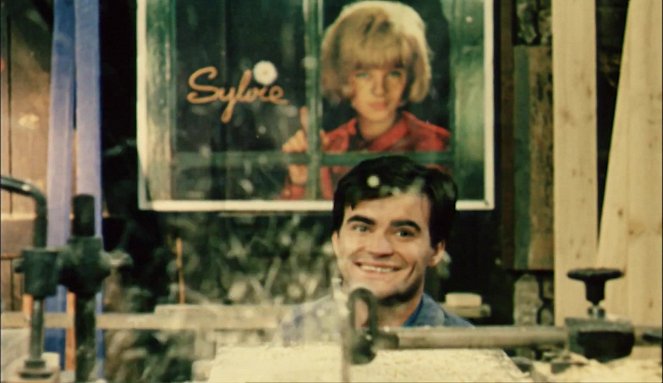Director:
Agnès VardaGuión:
Agnès VardaMúsica:
Jean-Michel DefayeReparto:
Jean-Claude Drouot, Claire Drouot, Olivier Drouot, Sandrine Drouot, Marc Eyraud, Sylvia Saurel, Paul Vecchiali, Marie-France BoyerSinopsis(1)
Though married to the good-natured, beautiful Thérèse (Claire Drouot), young husband and father François (Jean-Claude Drouot) finds himself falling unquestioningly into an affair with an attractive postal worker. One of Agnès Varda's most provocative films, Le bonheur examines, with a deceptively cheery palette and the spirited strains of Mozart, the ideas of fidelity and happiness in a modern, self-centered world. (Criterion)
(más)Reseñas (2)
The post-war visual culture in Western countries (particularly period television commercials and magazine ads) created the illusion that a woman considered home and housework to be the absolute expression of her personality. The happiness of the image promoting this distribution of power is subverted when the emptiness of repetitive domestic activities and the transformation of women into easily replaceable goods are pointed out and certain visual clichés in the representation of women and familial happiness are highlighted to the verge of parody. Whereas the popular media convinced women that happiness consists in love, marriage, motherhood and taking care of the household, Varda warns against the possible tragic consequences of such simplistic thinking, depriving women of their individuality and self-worth not derived from their relationships with others. Happiness is not an automatic by-product of the adoption of a certain model of cohabitation and it definitely cannot be bought, nor can it be multiplied by increasing the sources of our pleasure (women, for example). Varda communicates this viewpoint, which is relatively critical of the logic of consumer society, so subtly (and particularly through the utilised stylistic techniques rather than in the dialogue) that many did not grasp the film’s ironic nature and conversely perceived it as an attack on women’s emancipation. From the director’s previous and subsequent work and from her many statements, however, it is obvious that she was never really an advocate for the traditional (bourgeois) model of familial happiness and the subordinate role of women. 80%
()
The cliché about the unity of content and form in all its beauty proves that it is not actually cliché at all. That is if someone has a filmmaker's sense like that of Varda. The plot itself is not particularly dazzling until we are dazzled by the colors of the film images, and it is precisely those colors that color the entire film. They are not just an aesthetic decoration, as they also play a role (and perhaps even mainly!) in the realm of meaning. The game played between several main colors (yellow, green, blue, red) forms the axis of the film on many levels. First, there is the symbolism that each color gains from its relationship to the environment and objects on which it appears (Example 1 red = during a conversation with the mistress in a café, there is a red sign in the background that says "temptation," but in the transitions, there is a sign on a red façade that says "trust," and in the next shot, there is a "certainty" sign on a white wall - followed by a cut to the wife in red and white clothes; Example 2 blue = the mistress' blue dress, the blue predominant in the city where the protagonist is leaving his wife). Colors also carry meaning in connection with the characters who become their carriers. The prevalent blue of the mistress gradually shifts to the male lover throughout the film. Blue (a symbol of the city) increasingly blends into green (a symbol of nature and also a place of family happiness in almost bucolic scenes). Yellow (here the color of "happiness" and traditionally the color of betrayal) - compare the final scene with the mistress in a yellow sweater to the first scene of the film with the wife in the yellow dress (i.e., predominantly yellow with elements of green and red; in terms of colors, we must be precise here!).
()

